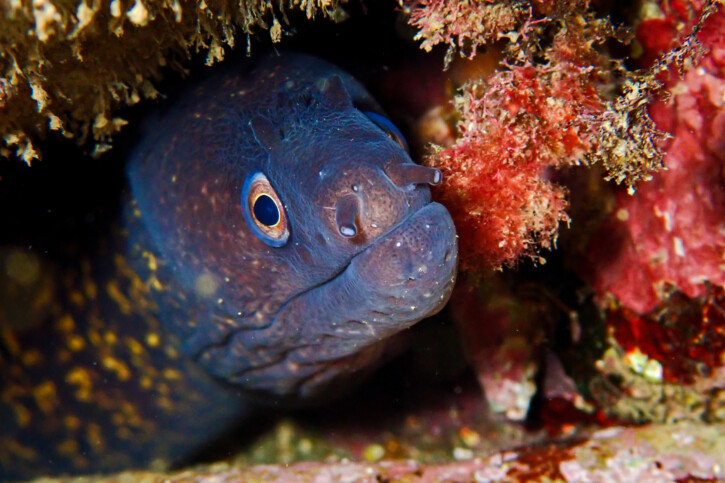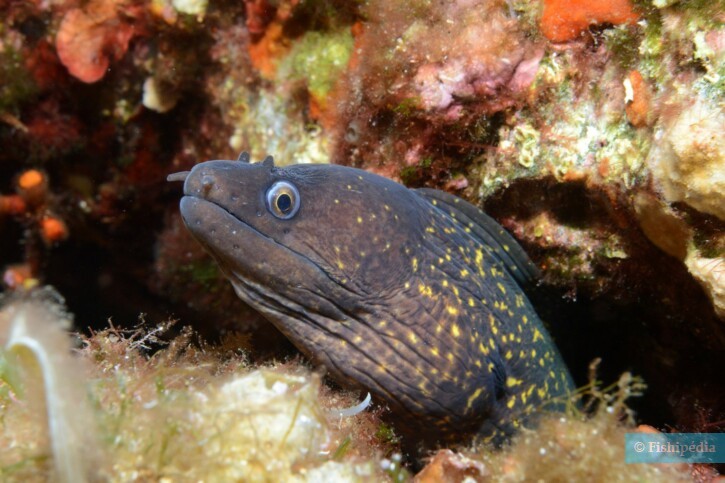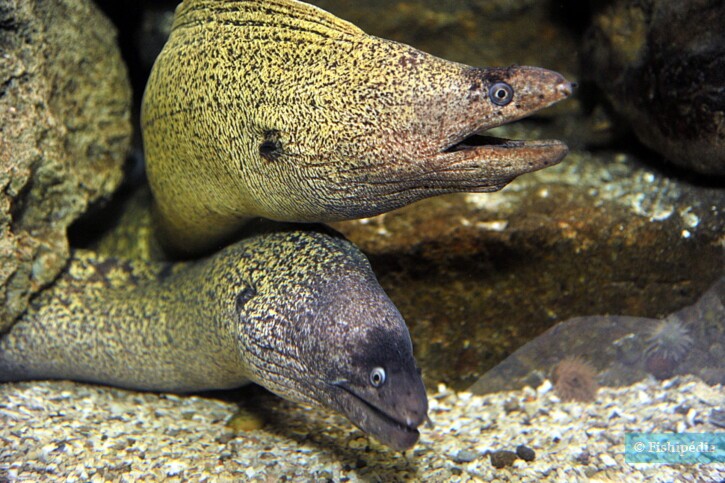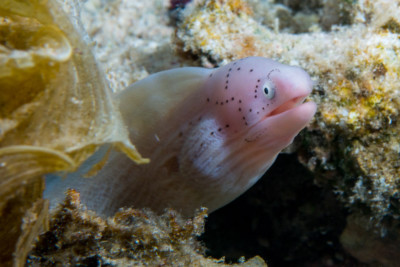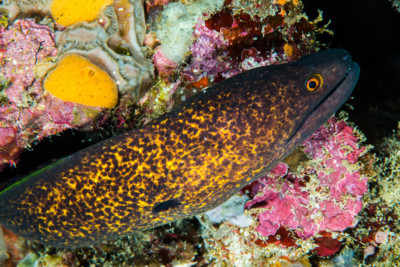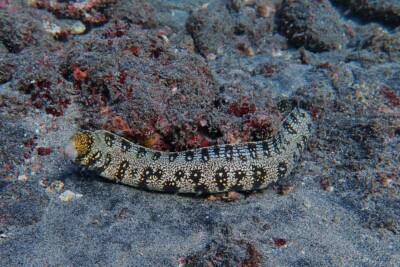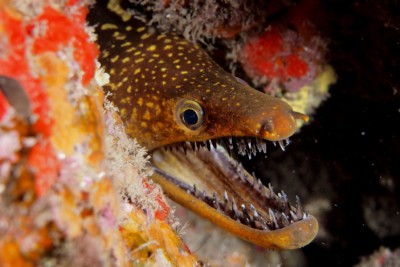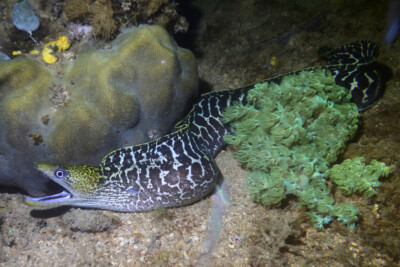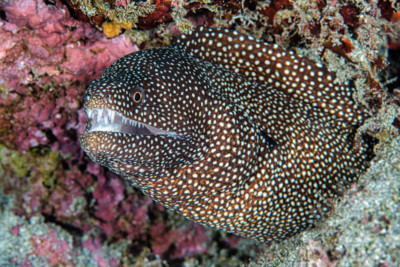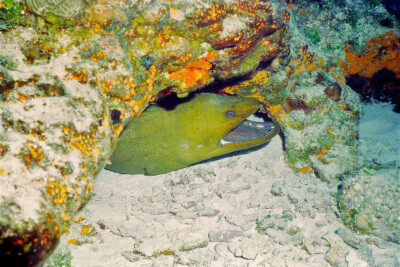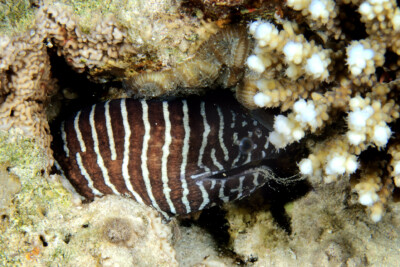mediterranean moray
| Scientific name | Muraena helena |
|---|---|
| Descriptor | Linnaeus |
| Year of description | 1758 |
| IUCN category (World) | LC |
| Family | Muraenidae |
| Genus | Muraena |
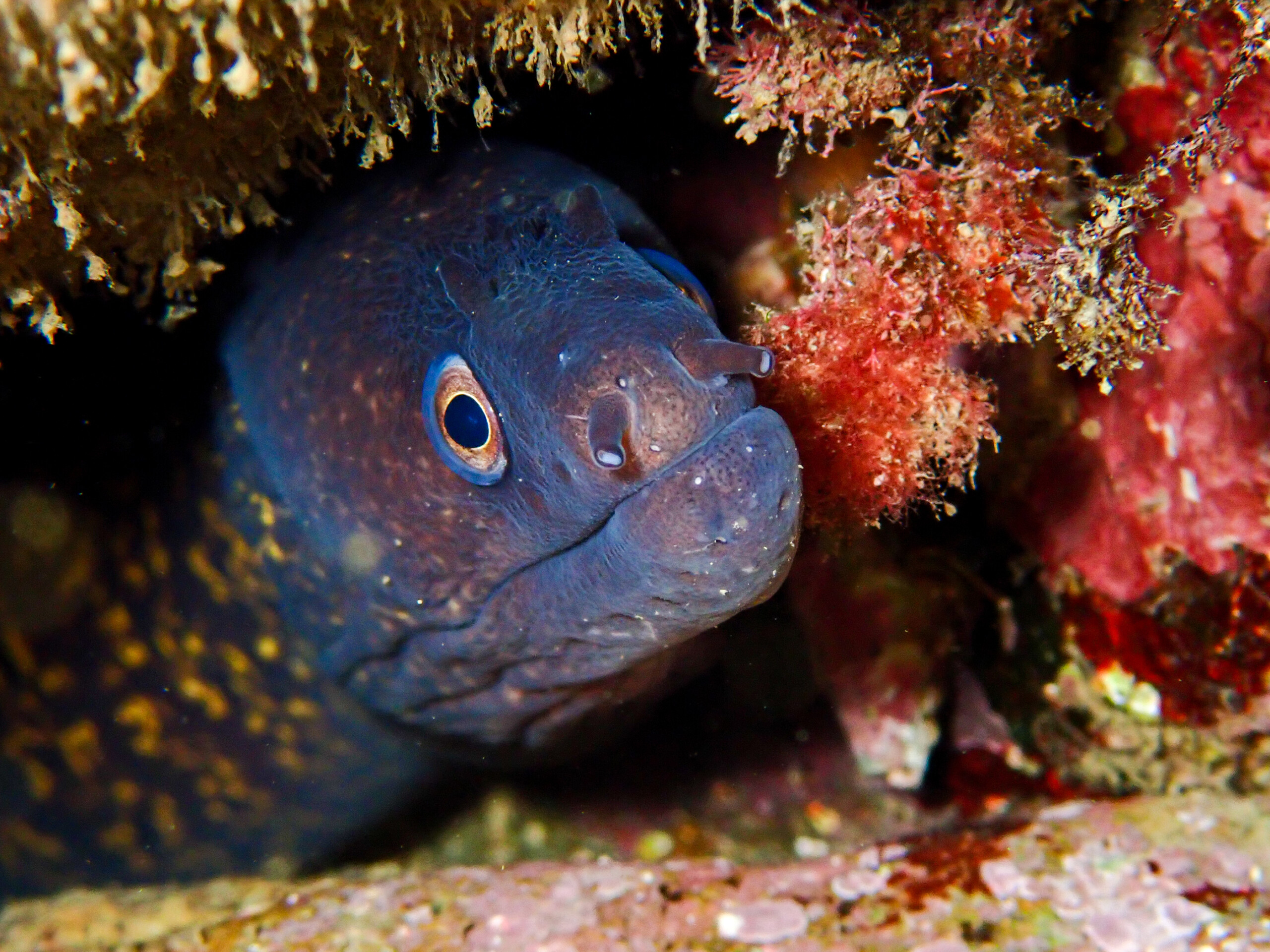

Introduction
Muraena helena, commonly known as mediterranean moray, is a salt water fish.
This sheet is currently being prepared. The texts currently proposed come from our data model or are being drafted. To request priority for this content, you can write to us HERE.
Who is it?
Morphology
-
Type
-
Average size100 cm
-
Maximum size150 cm
-
Longevity15 year
-
ShapeSerpentiform
-
Patterntasks
-
Type
-
Average size100 cm
-
Maximum size150 cm
-
Longevity15 year
-
ShapeSerpentiform
-
Patterntasks
How to recognize This fish ?
The mediterranean moray measures between 100 and 150 cm. This fish is bicolore with a predominantly marron, or and gris body. The also has jaune tasks.
Behaviour & Life cycle
-
dietcarnivorous
-
Sociabilitysolitary
-
territorialYes
-
Way of livingnocturnal
The mediterranean moray is a fish solitary naturally found near the bottom. This species is carnivorous . This fish lives mainly at night. Usually, it leaves its hiding place and starts to be active once it gets dark.
This species is territorial and does not appreciate the presence of intruders nearby, especially animals with similar behavior. It can also be virulent toward conspecifics. However, the mediterranean moray has little concern for non-territorial animals.
Reproduction
-
Reproductionovipare qui pond en eau libre
The mediterranean moray is a fish ovipare qui pond en eau libre.
Risks for humans
-
VenomousNo
-
BiteYes
This species can attack if it feels threatened. It is important to be particularly vigilant especially during dives or fishing sessions.
Origin and distribution
What is its habitat?
Natural environment characteristics
-
Depth1 - 800 m
-
FlowMedium
Biotope presentation
The mediterranean moray is most often found at a depth between 1m and 800m. However, it is not impossible to find this species at other depths.
Fishkeeping
Not recommended
We do not recommend keeping this species in an aquarium. It has unpredictable needs which, if not met, generate significant stress, potentially leading to a shorter life expectancy, an interruption of its growth or the development of pathogens.
To go further
Sources & Contributions
Participation & Validation
The Fishipedia team and specialist contributors are committed to providing high-quality content. However, although the information comes from scientific sources or testimonials from specialists, the cards may contain inaccuracies.

Yuhei Nakata

Benoit Chartrer

Adrien Falzon
Translation
Translation done with the valuable contribution of our translators, who make this information available to a wider audience. We sincerely thank them for their commitment.
Scientific partners
Tags
Species of the same family
